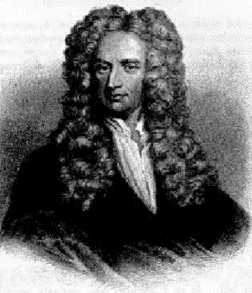
BHS -> Staff -> Mr. Stanbrough -> Physics -> Mechanics -> Newton's Laws -> Newton's First Law -> Forces -> this page
|
|
|
|
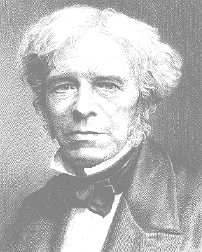 |
|
|
In the 19th century, the great Michael Faraday provided an answer to this problem, although his primary contributions were in the area of electrical and magnetic forces. If you run a comb through your hair on a dry day, you know that the comb can attract small pieces of paper and fluff. You have also observed that a magnet can exert a force on metal objects without touching them. You have also seen the patterns that iron filings make on a sheet of paper with a magnet underneath. (If you've never done this yourself - DO IT NOW!) To Faraday, these "lines of force" were real - he visualized that the lines showed how the magnet disturbed the space around it. The lines extend throughout all of space, getting weaker as they get farther from the magnet. Other metal objects respond to the disturbance at their location. So to Faraday, the magnet didn't attract the bits of metal directly. Instead, the magnet creates a magnetic field in space, and the magnetic field influences the motion of the bits of metal.
In the same way, an electrically-charged comb creates an electric field, a disturbance in the space around it, and the little bits of paper respond to the field. Right away, the idea of a gravitational field arose - an object with mass disturbs the space around it, and other massive objects respond to this field.
|
|
|
(1831-1897) |
So, by the dawn of the 20th century, it appeared that there were two kinds of force - gravitational force and electromagnetic force - one the province of Newton and the other the province of Maxwell. The mechanism of both forces seemed to be the field, although exactly what a field was, or the details of its operation, were sketchy. It is important to note that although this is not the end of the story, all of the forces that we observe are either electromagnetic or gravitational in nature. The force exerted on you by your chair is an electromagnetic force - essentially, the electrons in the atoms on the surface of the chair repel the electrons in the atoms of your skin!
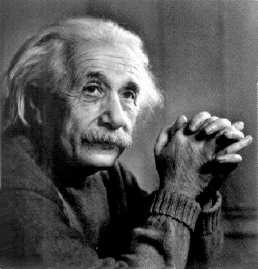 |
|
Nobel Prize in Physics 1921 |
The other pathway in the study of force became the study of the very small - quantum physics. One result of this labor is the discovery of two completely new kinds of force, called the strong force and the weak force.
What forces hold atoms together? Quantum physicists figured out that the electromagnetic force could be responsible for holding the negatively-charged electrons near the positively-charged nucleus - although the electron certainly does not behave like a classical particle! But, what force could hold the positively-charged protons tightly together inside the tiny nucleus? The electromagnetic repulsion generated at these distances is enormous! This force - the one that holds the nuclei of atoms together, is called the strong force. It is aptly named, since it must be many orders of magnitude stronger that the electromagnetic force in order to hold nuclei together. It differs from the gravitational force and the electromagnetic force not only in strength, but in range. Even though the gravitational and electromagnetic forces are much weaker, they have an infinite range (although they get weaker with distance). The range of the strong force is on the order of the size of a typical nucleus. Inside this range, it is incredibly strong - outside this range, nothing. This means that we never directly observe the strong force directly in action, even though without it our universe would not exist.
The weak force is also never seen outside the atom. It is responsible for certain kinds of radioactive decay, and without it, we wouldn't be here, either. However, physicists Sheldon Glashow, Abdus Salam, and Steven Weinberg discovered that the weak force and the electromagnetic force are actually the same - the electroweak force. So the count of fundamental forces drops back to three, although most physics texts still talk about the four fundamental forces - gravitation, electromagnetic, weak, and strong. This is probably due to the fact that the electromagnetic and weak forces appear to be different forces at this place and time in our universe. In the post-big-bang chaos of the young universe, they were the same, but as the universe expanded and cooled, their "symmetry is broken". These three men received the Nobel Prize in Physics in 1979 for their theoretical work on the electroweak force.
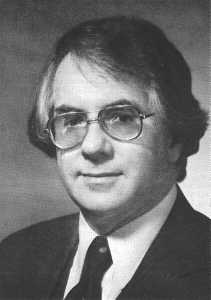 |
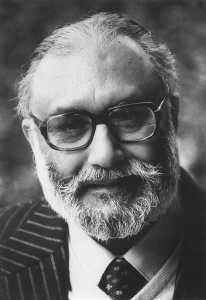 |
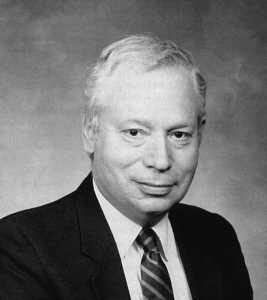 |
|
Nobel Prize in Physics 1979 |
Nobel Prize in Physics 1979 |
Nobel Prize in Physics 1979 |
So, what is the quantum view of the nature of force? In the Standard Model, quantum physicists view forces as exchanges of virtual particles. Huh? Well, there are certain types of particles, called bosons, that "mediate" forces. Each force has its own boson. For instance, the boson that mediates the electromagnetic force is the photon. In order for two electrons to exert electromagnetic forces on each other, they exchange virtual photons. How does this work? An analogy - though not a very accurate one - is this: imagine standing with a friend on smooth, frictionless ice holding basketballs. As you and your friend throw the basketballs back and forth the basketball exerts an impulse on you each time you throw it and each time you catch it. This causes you and your friend to accelerate away from each other. There is no force that causes you to be repelled by your friend - the acceleration is caused by the exchange of particles (basketballs).
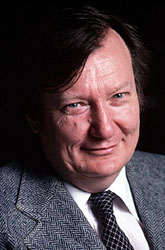 |
|
Nobel Prize in Physics 1984 |
Wait a minute! How can the gravitational force be "an exchange of virtual particles" when Einstein explained it geometrically - as a curvature of spacetime? How do these two ideas fit together? Well, there's the rub, you see - they don't. The two modern views of force are contradictory and mutually exclusive. At least one of them must be wrong, although there is considerable experimental evidence that they both are correct!
 |
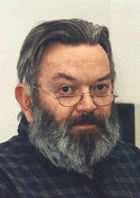 |
|
Nobel Prize in Physics 1999 |
Nobel Prize in Physics 1999 |
Today, the problem is not solved - not even close - but there are hints of progress. One of the most promising lines of investigation are the so-called super string theories. These are a family of theories in which particles consist of tiny loops of "string" (and other two-and higher-dimensional structures) whose properties ore determined by their modes of vibration in 7-, 9-, 11-, or 24-dimensional space. Strange? You bet! (For an excellent and readable account of the development of super string theory by one of its major players, get the book The Elegant Universe, by Brian Greene - it's super!)
So far, physicists have not been able to even write down the full set of equations that make up super string theory, let alone solve them - they have to discover the mathematics as they go, as in the days of Newton. Yet, some predictions have emerged. The Standard Model predicts the existence of the Higgs particle, which is responsible for the mass of matter. Veltman and t'Hooft's mathematical methods have given a precise prediction for the mass/energy of this particle, and physicists may be able to detect it (if it exists) within the next few years. Super string theories predict the existence of symmetrical "partners" for matter particles - the electron's "partner" is called the "selection", for instance, but no one has any definite idea of when one of these particles might turn up. So far, none of these predictions has so far been experimentally confirmed, but time will tell, won't it?
The search for the ultimate nature of force is an extremely active area of research - both theoretical and experimental. What's a force? Nobody really knows. The question awaits an answer. The search for the answer has occupied some of the greatest minds of all time, and generated several Nobel Prizes - so far. How would you like your name to go down in history along with - perhaps greater than - Newton's and Einstein's? Get busy! What are you waiting for?